Sutro Baths - the largest water park of the 19th century
Categories: Design and Architecture | History | Sport
By Pictolic https://pictolic.com/article/sutro-baths-the-largest-water-park-of-the-19th-century.htmlToday, huge swimming pools and water parks do not surprise anyone. The leader is considered to be the complex in Algarrobo, near Santiago, the capital of Chile. Its length reaches 1013 meters, and the volume of water is 250 million liters. But once upon a time, the record-breaking pools were much more modest. In the late 19th and early 20th centuries, the Sutro Baths in San Francisco, USA, were considered a real wonder of the world.
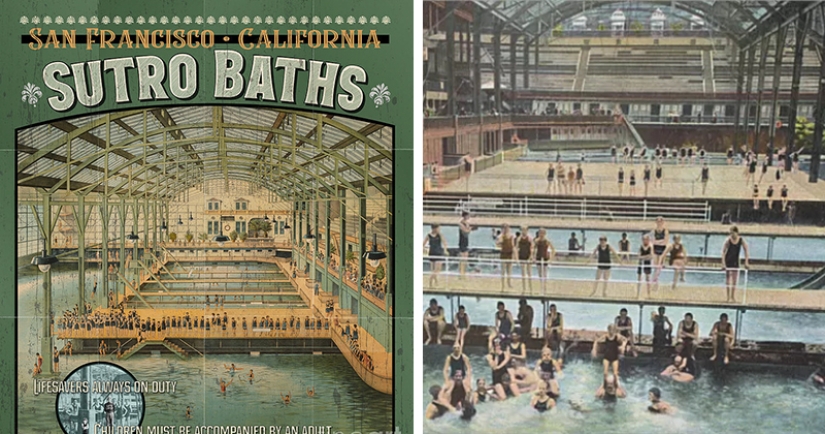
Visitors to the Golden Gate National Recreation Area, north of San Francisco's Ocean Beach, often come across unremarkable ruins right by the ocean. Concrete parapets, low walls, stairs leading to nowhere, and a cracked tunnel are all remnants of the past, hidden amidst the picturesque scenery.
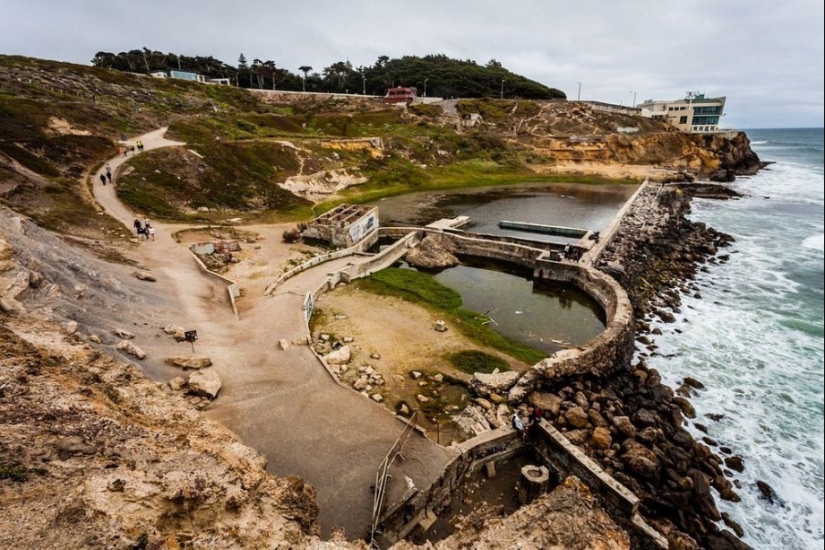
This is all that remains of the Sutro Baths, a grand sports and entertainment complex built in the late 19th century. At one time, these baths were considered unique and were among the main attractions of California. Their creator was businessman and mayor of San Francisco Adolph Sutro.
The baths were part of the luxurious Cliff House estate located in Ocean Beach Bay. The squat building with classical architecture and a glass roof housed a freshwater pool and six saltwater pools, where different temperatures were maintained. The main pool was 150 meters long and 77 meters wide. It required 6.8 million liters of water to fill it.
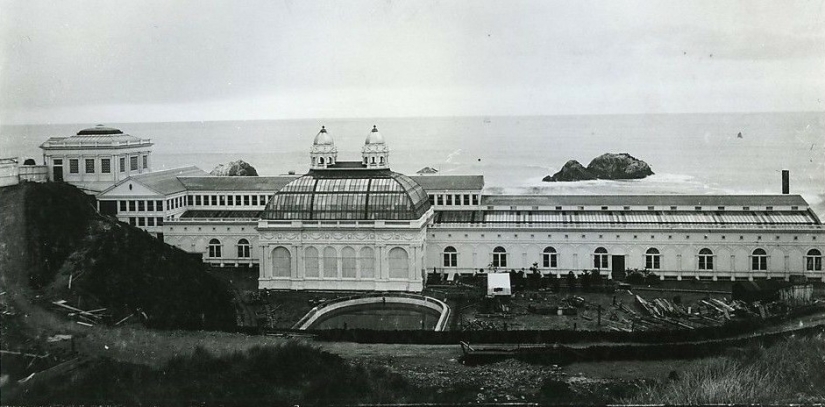
To fill the pools, engineers designed a network of underground tunnels that connected them to the ocean. During high tide, the pools filled in just an hour. When the ocean receded, a powerful turbine pump maintained the water level, capable of filling the pools in five hours.
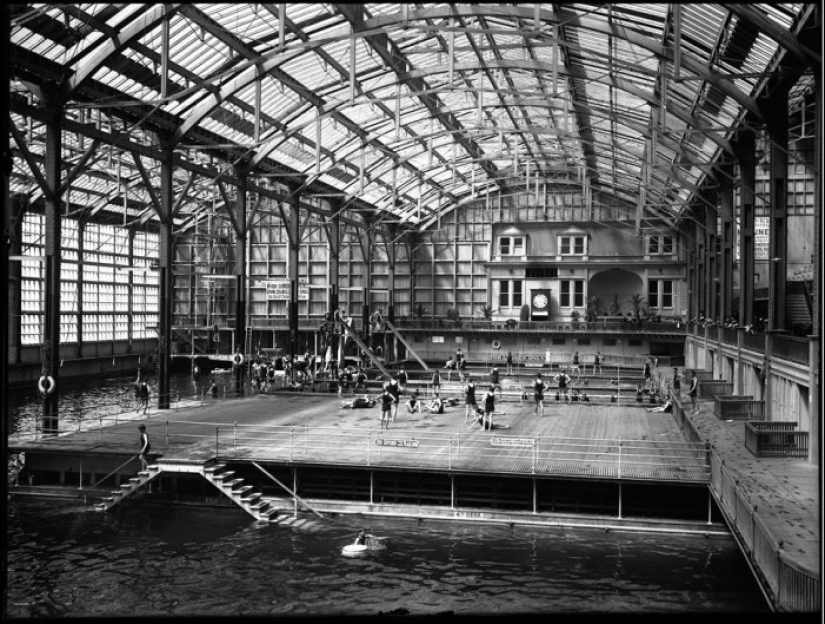
Inside the complex there was everything for a comfortable rest. Visitors were offered 500 changing rooms, designed for 20 thousand people at a time. Visitors were offered water slides, artificial waterfalls, trampolines, springboards, fountains and other attractions. In addition, the complex housed a museum.
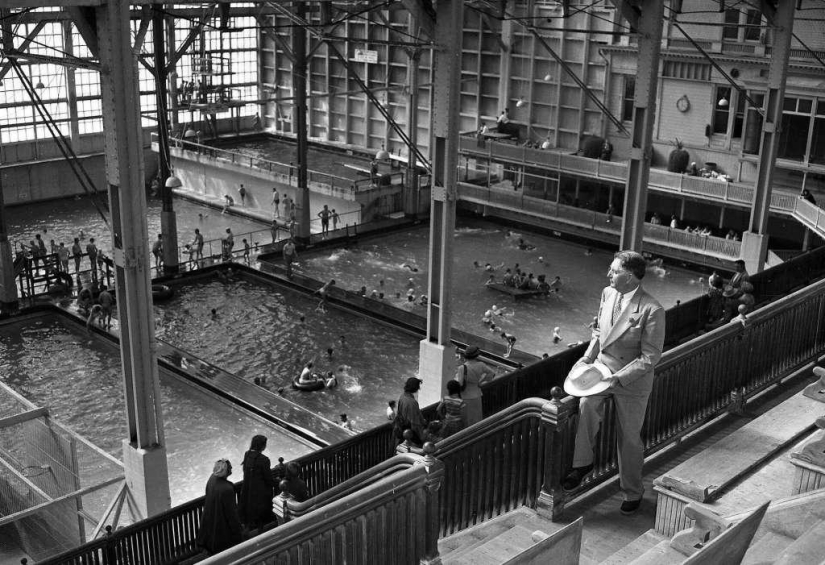
The exhibition featured unique curiosities collected by Adolph Sutro during his travels around the world. Visitors could see Egyptian mummies, stuffed polar bears and monkeys, totem poles from Alaska, paintings, tapestries and artifacts from Mexico, China, Africa, Asia and the Middle East.

Additionally, the Sutro baths offered a variety of entertainment. There were dance floors where competitions and concerts were regularly held, cozy family cafes and even shops. You could spend the whole day in the baths without getting bored for a minute.
It is especially worth mentioning that Adolph Sutro did not build the baths for his own vanity or profit. He was a philanthropist and wanted to make recreation available to all residents of San Francisco, especially workers. Sutro's baths could be visited by absolutely any resident or guest of the city.

The prices were very democratic: at that time in San Francisco a train ticket cost 5 cents, and entrance to the baths - 25 cents. This price included a bathing suit and a towel. At the same time, there was no time limit for visitors - you could stay in the baths until closing time.

It is not hard to guess that the Sutro baths did not bring profit to the owner. On the contrary, they required constant investment. It was especially hard during the Great Depression, when many city dwellers could not afford even the meager entrance fee.
After World War II, the Sutro Baths, which had lost their popularity, were tried to be revived. A skating rink was opened in the pool, but it did not live up to expectations. In 1955, the complex even received its own tram line to make the journey from the city easier. But this project was also unsuccessful. The tram tracks ran along the ocean, and salty spray quickly corroded the metal parts. In 1965, the tram was finally abandoned.

In 1966, the Sutro complex was sold to a developer. The company planned to use part of the territory for a residential complex, and part of the swimming pool building was dismantled. However, in June of that year, a major fire occurred, the cause of which was never determined. The fire destroyed the remaining buildings. After that, the place lost interest for investors, and now the ocean is gradually destroying what remains of what was once the largest water park on the planet.
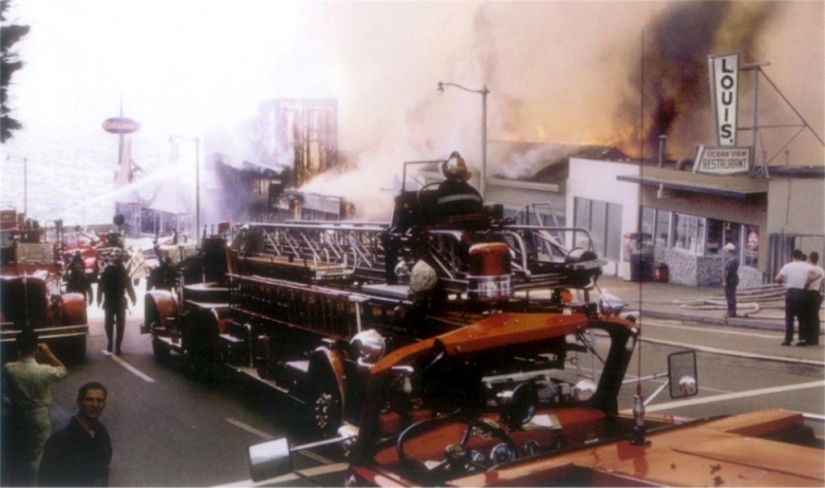
The Sutro Baths were once a symbol of technological progress, affordable recreation and urban culture, but time and circumstances left them no chance of survival. Today, their ruins are just a reminder of how grandiose projects can disappear into history. Do you think the Sutro Baths could have survived in our time if they had been adapted to modern conditions? What changes could have helped them retain their popularity?
Recent articles

Leonardo da Vinci was accused of being fond of orgies. William the Conqueror, despite all his successes, was called a "Bastard" ...

Modesty? Decency? A sense of tact? No, you haven't heard! Just look at what the people from the selection below are doing! No ...

American documentary photographer Bruce Davidson came to the UK in 1960 for a couple of months on the assignment of Queen magazine. ...